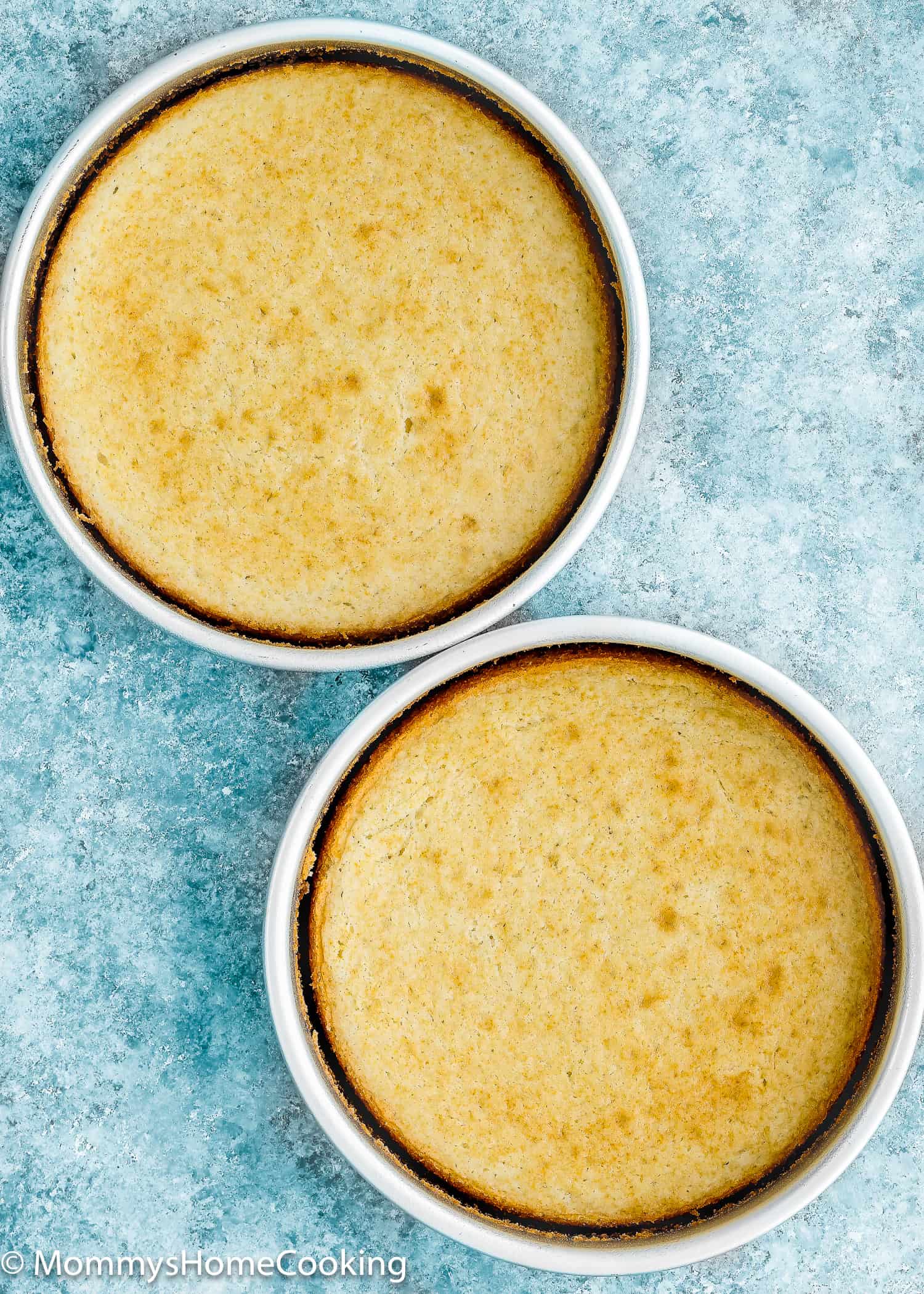Don’t leave your cakes to chance! This guide, ‘4 Ways To Know If Your Cake Is Done Baking,’ is your ticket to cake success. Elevate your baking game and say goodbye to overbaked or undercooked cakes!

Don’t Waste Effort and Ingredients!
I’ve Made the Mistakes! As a cookbook author, home baker, and food blogger, I’ve made THOUSANDS of mistakes in the kitchen; the good thing is that I have learned along the way. Underbaking or overcooking cakes has been one of those mistakes.
Let’s be honest: underbaked and overcooked cakes are definitely not fun because they can turn a delightful baking experience into a culinary misadventure.
Underbaked cakes are like unfinished homework – they’re not ready! They’re all gooey and raw in the middle, making for a messy and unpleasant eating experience. On the other hand, overbaked cakes dry and crumbly. They suck all the moisture out of your mouth, and you end up desperately searching for a glass of milk to wash them down.
To ensure your cake is a hit at the party, always aim for that perfect baking sweet spot!
Why Should I Care?
Baking a cake for the right amount of time is crucial for several reasons:
- Texture: The baking time directly impacts the texture of the cake. Underbaking can result in a gummy, doughy, or overly moist interior while overbaking can make the cake dry and crumbly. Achieving the correct baking time ensures a cake with the desired soft, tender, and moist crumb.
- Flavor: Baking time affects the flavor of the cake. Overbaking can lead to a loss of moisture and flavor, causing the cake to taste dull or even burnt. On the other hand, underbaking may result in an unpleasant raw flour taste. Proper baking ensures that the flavors have developed fully and harmoniously.
- Rising and Leavening: Baking time is closely tied to the cake’s rising and leavening processes. Most cakes rely on baking powder, baking soda, or yeast to rise. These leavening agents produce carbon dioxide gas, which helps the cake rise and become light and fluffy. The baking time allows these gases to expand and create the desired cake structure.
- Food Safety: Ensuring that a cake is baked for the right amount of time is crucial for food safety. Proper baking kills harmful microorganisms, such as bacteria and pathogens, that may be present in the batter. It eliminates any risk of foodborne illnesses associated with consuming undercooked batter or dough.
- Aesthetics: The appearance of the cake is also affected by baking time. Overbaking can lead to a dark, unappealing crust, while underbaking may result in a cake that’s too pale. Achieving the correct baking time helps create an inviting, golden-brown exterior that’s visually appealing.
- Structural Integrity: Proper baking time ensures that the cake maintains its structural integrity. It should hold its shape and not collapse or sink in the center. Overbaking can cause the cake to become too firm, while underbaking may result in a sunken or gooey center.
There are several methods you can use to test if a cake is done baking. The exact method you choose may depend on the type of cake you’re baking and personal preference. Here are some common ways to test for cake doneness:
1 – Toothpick Test or Cake Tester
Insert a toothpick or cake tester into the center of the cake. If it comes out clean or with just a few moist crumbs clinging to it, the cake is done.
If the toothpick comes out with wet batter on it, the cake needs more baking time.
2 – Finger Test or Bounce-Back Test
Gently press the center of the cake with your finger. If it springs back, feels firm, and doesn’t leave an indentation, the cake is done.
If it feels soft and/or If your finger leaves an indentation, the cake needs more baking time.
3 – Visual Cues
Look for the cake’s edges to pull away from the sides of the cake pan. This is a sign that the cake is shrinking slightly and may be done.
The cake’s top should be golden brown and have a slightly firm texture.
4 – Internal Temperature
If you have a kitchen thermometer, you can insert it into the center of the cake. For most cakes, the internal temperature should be around 205-210°F (96-99°C) when done.
Remember that different types of cakes may have slightly different cues for doneness, so it’s essential to consider the specific recipe you’re using. Additionally, factors like your oven’s temperature accuracy and the size and type of pan you’re using can affect baking times, so always use these tests as a guideline rather than a strict rule.
Let’s Bake Some Delicious Egg-Free Cakes!
- Eggless Vanilla Cake Recipe
- One Bowl Eggless Chocolate Cake
- Eggless Red Velvet Cake
- Eggless Lemon Cake
- The BEST Eggless Pumpkin Cake
- Browse more recipes…
❤️ Love what you see? JOIN my Private Baking Club. Also, SUBSCRIBE to Mommy’s Home Cooking, so you’ll never miss a recipe! And FOLLOW along on Instagram, Pinterest, and Facebook for more fun!

Leave a Reply